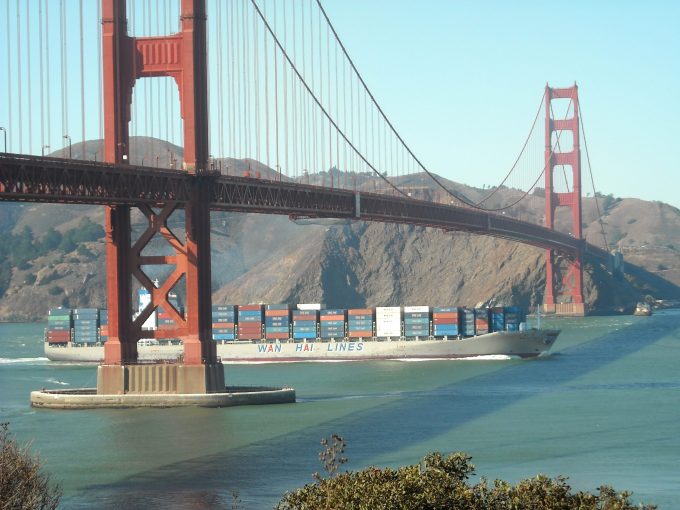Container spot rates have peaked as all major trades see prices fall
There was more evidence in this week’s container port freight markets that peak prices on ...
TFII: SOLID AS USUALMAERSK: WEAKENINGF: FALLING OFF A CLIFFAAPL: 'BOTTLENECK IN MAINLAND CHINA'AAPL: CHINA TRENDSDHL: GROWTH CAPEXR: ANOTHER SOLID DELIVERYMFT: HERE COMES THE FALLDSV: LOOK AT SCHENKER PERFORMANCEUPS: A WAVE OF DOWNGRADES DSV: BARGAIN BINKNX: EARNINGS OUTODFL: RISING AND FALLING AND THEN RISING
TFII: SOLID AS USUALMAERSK: WEAKENINGF: FALLING OFF A CLIFFAAPL: 'BOTTLENECK IN MAINLAND CHINA'AAPL: CHINA TRENDSDHL: GROWTH CAPEXR: ANOTHER SOLID DELIVERYMFT: HERE COMES THE FALLDSV: LOOK AT SCHENKER PERFORMANCEUPS: A WAVE OF DOWNGRADES DSV: BARGAIN BINKNX: EARNINGS OUTODFL: RISING AND FALLING AND THEN RISING

The Covid freight rate bubble has burst, and the absence of “easy money” is forcing smaller carriers and forwarders to quit the transpacific trade.
According to Richie Lin, logistics consultant director at Team Global Logistics, the inflated freight rates of 2020 and 2021 attracted new players to provide transpacific services in search of quick returns.
He explained: “We saw many when port congestion, a lack of labour and equipment shortages created a once-in-a-lifetime opportunity to make big fortunes.”
Mr Lin said investment had poured into the shipping industry the same way venture capitalists poured “hundreds of billions” into start-ups still trying to find their business model and didn’t care if they got their money back.
“They believed their money would be rewarded by finding another Facebook, Apple, Google or Alibaba – but had to invest in many failed companies in the process,” he added.
However, Mr Lin said, now the US Federal Reserve had raised interest rates, the mood had changed and the “opportunists are eager to cash-out in fear of being the last one in the house on fire”.
For example, he said, some forwarders were created in 2020 and “just had relations with shipping lines to sell space, but have no real services whether in the Asia or the US”.
At the same time, he added, shipping lines which focused on the intra-Asia market, such as WHL, TS lines, and CU-Lines, “all invested resources in providing transpacific services because unprecedented revenues gave every player a chance to make money and stay in the game. But the scenario now has completely changed.”
Indeed, Drewry’s WCI US west coast rate fell to $6,127 per 40ft last week, and is now 46% lower than a year ago.
Mr Lin told The Loadstar decreasing revenues had pushed smaller forwarders and shipping lines out of the transpacific trades, because “now there isn’t much profit”.
Nevertheless, if smaller players are pushed out of the market, does it not leave fewer options for cargo owners?
“You can say that, but space allocation is enough, because there will be bigger vessels joining to provide services,” he said.
Looking ahead, he noted how consumers were still buying, but predicted container volumes would not resume to the levels experienced last year.
“Forwarders cannot survive with one tradelane; we have to diversify and integrate other services, such as airfreight, warehousing and deliveries. Just like the value investment strategy, only those willing to create value for long-term development can stay alive through numerous business cycles,” Mr Lin added.
For more on on the subject of shifting congestion, listen to this clip of Jason Haith, Manager at OEC Group on the latest Loadstar Podcast.
Comment on this article